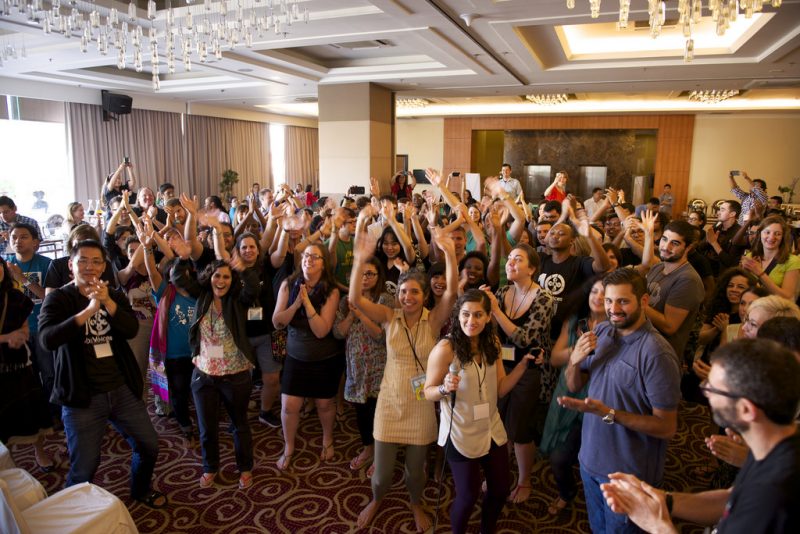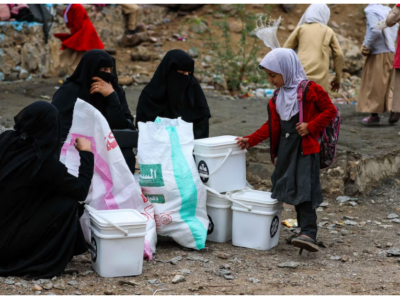
Global Voices 2015 Summit, Cebu, Philippines. Photo by Laura Schneider, January 2015. CC 3.0 license.
When we started Global Voices, over 11 years ago, most bloggers lived in or near major metropolitan areas, and were writing in English. A “global voice” not tied to a mass media outlet was a new concept. We started GV because we recognized that the voices and languages we choose to listen to influence how we understand the world.
WE WANT YOUR INPUT!
We're eager to hear your ideas and suggestions for topics that we should discuss at the meeting. If there are any items you’d like to suggest for the meeting agenda, we’ve opened this forum where you can add your input and vote for ideas you like.
But the communications environment in which we started GV was much less complex than the one we have today. As billions more have come online, governments are increasingly focused on controlling speech—especially online speech—and the tools that make that speech possible. Media corporations now mediate speech in ways that can be dangerous for vulnerable communities and people. Political conflict is ever more present online. The networked communications that were supposed to level the playing field replicate existing biases and power imbalances, and the algorithms designed by social media companies show us what we are already comfortable knowing. The world of the internet has become increasingly hazardous and difficult to navigate, and this has dramatic real-world consequences, for both individuals and groups.
In the context of all that is happening in the world today, building bridges to connect cultures, communities, languages, ideas and people is even more urgent. At our Summit in the Philippines in January 2015 we acknowledged that our mission—the restructuring of media and society to ensure more equitable attention to marginal voices and stories—is more necessary than ever. We need to work creatively to ensure that a diversity of voices and perspectives can compete in the context of clickbait stories and sensation that takes up so much of our collective attention.
Strategic planning
During its quarterly meetings, the Global Voices board has had many conversations about the future of GV from the standpoint of strategic planning; the board of Friends of Global Voices does the same in biennial sessions. At a board meeting earlier this year, our GV board chair, Mohamed Nanabhay, remarked that we already have a strategic plan, based on the work the Community has done in pre-summit working groups, at summit internal meetings and in our board and staff conversations. What we really need is resources to implement it. We know what we’re doing, Mohamed said, we just need streamline and document it, and implement it through funding and community action.
While I agree with that idea in general, I wonder how far we’ve actually come. Did we collaborate sufficiently? Was the result available to the Community and to the public, for comment and reflection? Did we capture the most urgent concerns facing our Community and others with whom we work? Will it help secure our future as an organization and Community? Most importantly, are our conclusions still valid in a time of rapid technological and social change?
How should we at Global Voices go about planning our strategy and future? Because of our hybrid nature as community, organization, and network, standard templates for planning do not easily work for us. Our community ethos—passion, kindness, desire for collaboration, sensitivity to the nuances of power and hierarchy, perhaps even our aversion to conflict—influences how we engage one another and the world as part of a planning process. And the nature of community—multilingual, distributed and decentralized, and volunteer, the very elements that make GV such a diverse and interesting group—also creates challenges for agreement on ideas, and coordination across time and space.
Our process
Since 2013 the core team has met annually for a planning meeting. Our most extensive meeting was just after the Philippines Summit in January 2015. After the internal Community meeting, the newsroom and Translation Managerial teams and the core team spent several days together working through the ideas generated at the internal meeting, seeking to turn them into priorities, projects, and tasks.
The result of all of these meetings—internal, editorial, core team, our boards, as well as the meetings held by various sections over the course of the year—is a series of documents, notes and agreements on how we move forward, and they’ve guided our work over the last year, and also formed the template for our current strategy. It’s sometimes a messy process, and we believe neatness and efficiency are much less important than being inclusive, and making sure the Community participates in decision-making.
Next steps
The next core team strategy meeting, the first face-to-face for the core team as a whole in nearly two years, will take place on November 30-December 4 in Mexico City. We are eager to hear your ideas and suggestions for topics that we should discuss at the meeting. If there are any matters you’d like to suggest for the meeting agenda, we’ve opened this forum where you can add your input and vote for ideas you like.
Over the next few months, we’ll be rolling out a series of posts about this process, sharing documents for comment and revision, creating a public space for our documents, and spending some time together thinking about GV’s future, through calls and interviews, and spaces for ideas, reflections and commentary. Our aim is for each post to address some aspect of planning, and to spark the conversation and discussion that will help us plan the future of GV, step by step.




1 comment